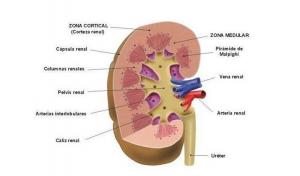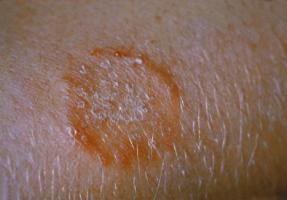Immune system: what is it, parts, functions and characteristics
All living beings on Earth are open systems. The cell, the minimum unit for life, must be able to interact with the environment to receive energy from one way or another, transform matter into metabolic products and divide if the conditions are conducive. Without the relationship with the environment, all these tasks would be impossible.
Based on this premise, processes such as respiration, nutrition, excretion and many other things are explained. Organic matter enters our body, we use it, and it leaves it as waste. The same is true of respiration. Unfortunately, this open exchange model not only allows living things to ingest food and oxygen, it is also a free pathway for pathogens to enter the body.
Viruses, bacteria, viroids, prions, exoparasites, nematodes, flatworms and a long list of biological agents can take advantage of the pathways of entry of higher vertebrates (and invertebrates) and proliferate inside its host, although this is detrimental to it in the short or long term. If you are interested in this premise, keep reading: today
we tell you all about the immune system, a biologically admirable defense mechanism with important evolutionary and physiological connotations. Do not miss it.- Related article: "The 12 systems of the human body (and how they work)"
What is the immune system?
The National Cancer Institute (NIH) defines the immune system as “a complex network of cells, tissues, and organs (and the substances they make) that help the body fight infections and other diseases”. This biological conglomerate is composed of white blood cells (leukocytes), special cell bodies, structures tissues and all formations of the lymphatic system, such as the thymus, spleen, lymph nodes and bone marrow, among others.
At this point, it should be noted that the immune system not only fights against the exogenous (viruses, bacteria, etc.), but it can also be activated by an internal failure, such as cell proliferation at a rate excessive. For example, Natural Killer (NK) cells help detect and limit the development of cancers, as long as the tumor cells do not go unnoticed.
From a functional point of view, the immune system can be classified as "innate" or "acquired". This classification is merely informative, since in reality, the limits between the two are not easy to establish. Before describing each of these aspects, two key concepts should be taken into account:
- The innate immune system activates the acquired one in response to the entry of infections into the body.
- For its part, the acquired immune system uses innate mechanisms to eliminate biological threats.
Innate immune system
The innate immune system (IBS) is the host's first line of defense. Its members are, for the most part, pattern recognition recipients that act in a general way when faced with a specific threat. They do not direct their range of action towards a single bacterial species or genus, but rather recognize particles classified in large groups and modulate their response in a generic way.
Furthermore, it is necessary to point out that not only cells are immune components. In this category, for example, we find the skin (the largest organ of the human being), the sweat, saliva, behavioral acts (like coughing or sneezing), tears, and many other things more. Without going any further, saliva, tears and mucus have bactericidal compounds that attack pathogenic organisms in a very general way. These first gateways to the innate immune system are known as "primary biological barriers."
On the cellular side, we can highlight macrophages. These are cell bodies that engulf all foreign bodies that enter the body and present their antigens. on their membrane surface, act with which they activate the acquired immune system and its consequent specificity. Macrophages are the perfect example of the first premise already mentioned (the innate immune system activates the acquired one in response to the entry of infections into the body).
Fever, inflammation, the complement system and other cells (dendritic cells, neutrophils, eosinophils, basophils, mast cells and NK cells) are also part of the system innate immune system. In summary, these entities act quickly and generally against endogenous and exogenous stressors.

Acquired immune system
The acquired immune system is one that learns after exposure to a pathogen, in order to be able to act against it more effectively in future contacts. The fundamental properties of the acquired or adaptive immune system are the following:
- Specificity and diversity: IBS acts in a general way, recognizing patterns. On the other hand, the acquired system responds individually to each pathogen (and its antigen).
- Memory: a primary lymphocytic response may be ineffective, but the body remembers the pathogen to respond more effectively to it. Secondary responses are much faster and more lethal, thus avoiding many infectious conditions.
- Lack of activity against self: the immune system must attack external substances by recognizing their harmful molecules (antigens). In any case, the body's own cells must present a series of molecules (autoantigens) that warn the lymphocytes that they should not be attacked.
We are not going to focus on the specificities of B and T lymphocytes, since its mechanism of action is very complex and we still have certain approaches to make. It is enough for us to know that, for example, T lymphocytes they act in different ways when they are presented with an antigen from a microorganism, either by destroying it (cytotoxic T), helping other immune entities (T helpers) or ending the immune response when the battle is over (T suppressors).
On the other hand, it should be noted that the key to the memory of the acquired immune system lies in the proliferation of B lymphocytes. When first exposed to a pathogen, the B-lymphocyte line creates memory cell bodies, which recall the characteristics of the pathogen very accurately. A) Yes, with future exposures, antibodies are produced much faster and harmful microorganisms can be destroyed before they become a problem.
- You may be interested in: "Leukocytes: what are they, types and functions in the human body"
The evolutionary significance of the immune system
Due to the anthropocentric vision of the human being, there is a preconceived idea that all these responses and mechanisms are unique to our species. Nothing is further from reality.
All living forms on Earth respond in one way or another to external pathogens, without exception. Although some living beings do not have an immune system as such, they are capable of, for example, synthesizing bactericidal substances in the medium and thus killing their possible competitors.
Although it is a more ethereal concept than the heart or the brain, it is necessary to put the immune system in perspective: it is made up of millions different cell bodies and it is a constantly synthesizing machinery that requires energy at all times to function properly. correct. Responding to the exogenous is not free, and therefore those who cannot afford it end up dying in nature.
With this premise, it can be theorized that the immune system has arisen solely in response to external stressors. If a pathogen appears in an ecosystem, the immune system tries to recognize it, eliminate it, and remember it for future exposures. On the other side of the coin, the microorganism will mutate rapidly in each generation, with the “intention” of not being recognized by B lymphocytes in the next infectious picture.
So that, any immune action generates a reaction of equal intensity in pathogenic populations. The host-parasite relationship is based on an “arms race” type relationship: when the first generates a barrier, the second is selected over time to bypass it. This mechanism explains, for example, the appearance of bacteria resistant to antibiotics.
Resume
The immune system must be exact, fast, precise, have the ability to remember and be able to discern between the internal and the external. Unfortunately, sometimes this perfect biological gear fails, taking with it all the benefits and answers that we have mentioned. In many autoimmune diseases, the lymphocytes do not detect the body's autoantigens as beneficial, and end up attacking healthy tissues without any biological sense. This, without medication, would translate into death in all cases.
In short, the immune system is a necessary tool, but one that can also fail over time. As the biological barriers of the organisms evolve, the pathogenic responses do so with them, with the intention of being able to create an infectious picture one more day.


